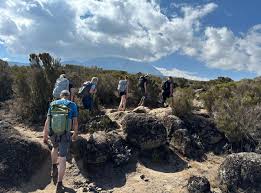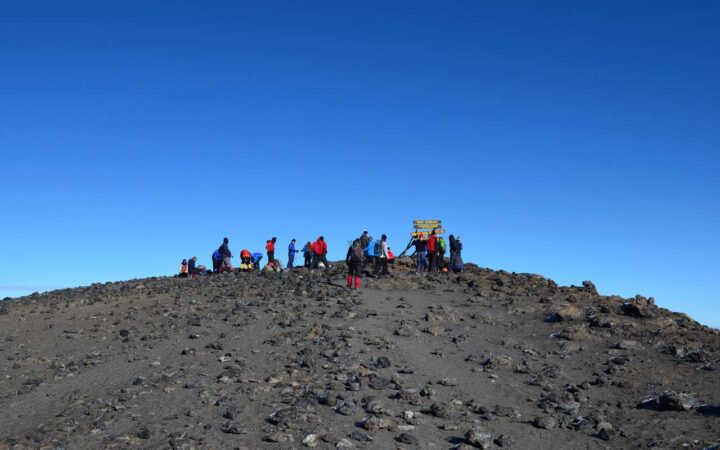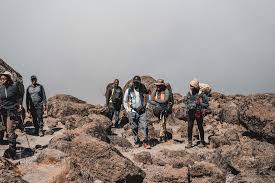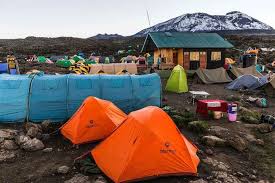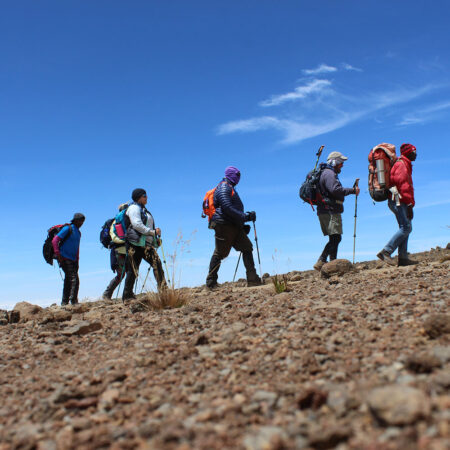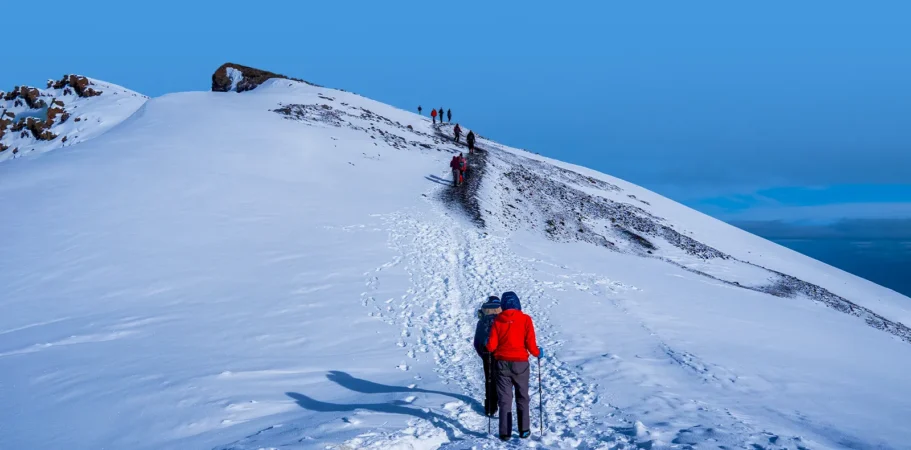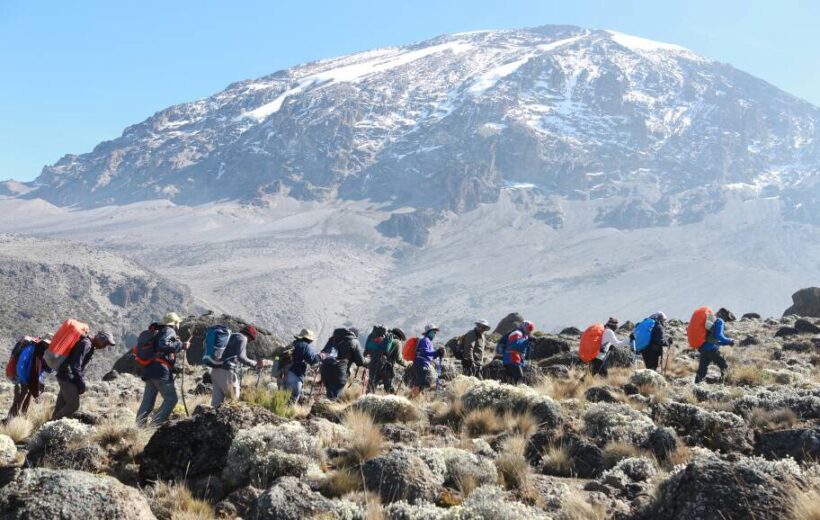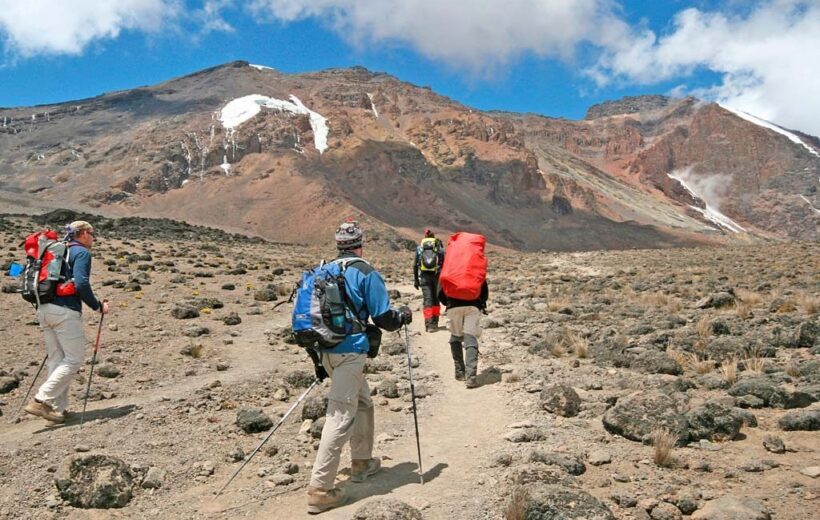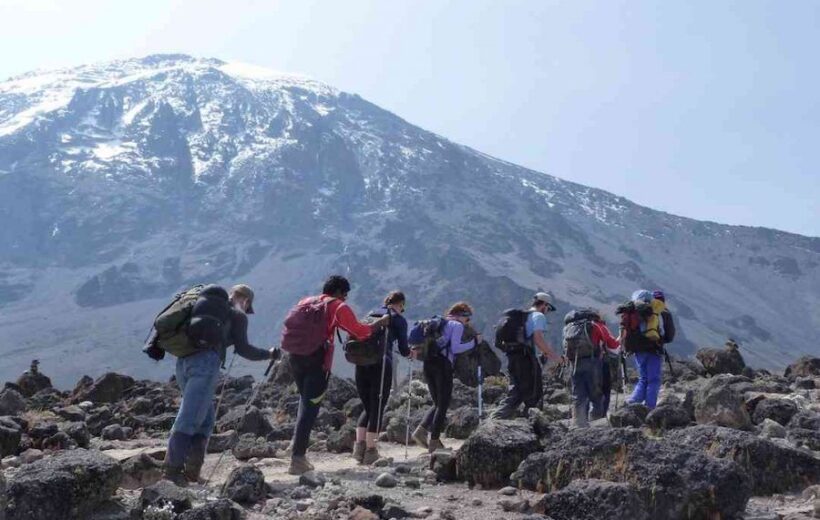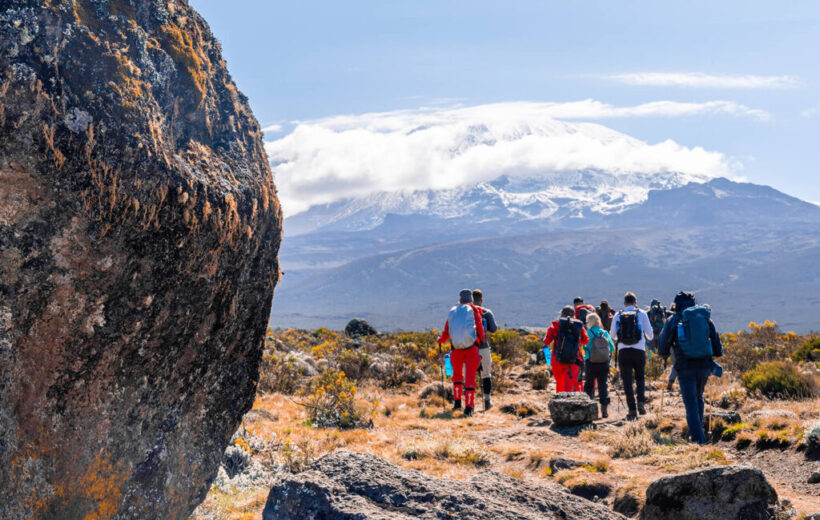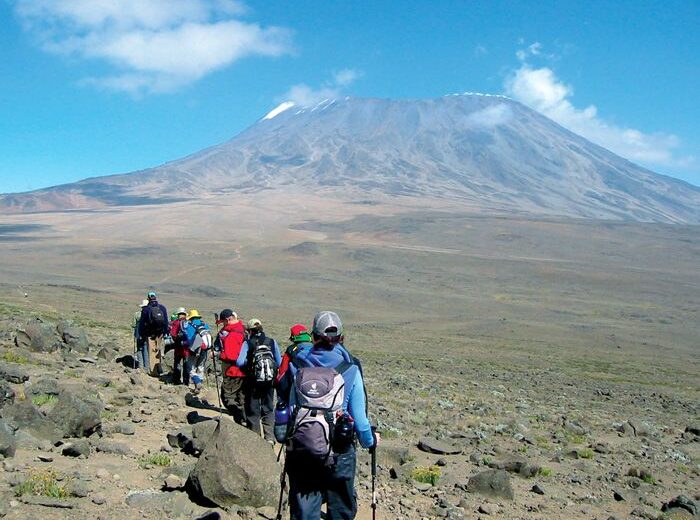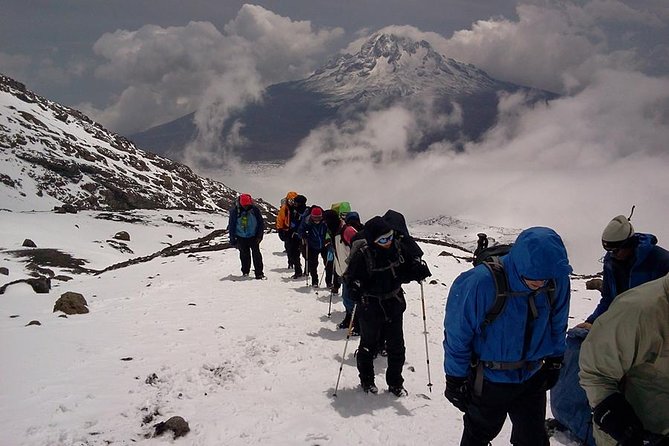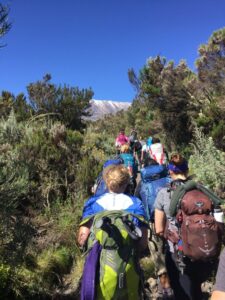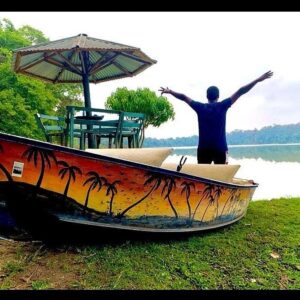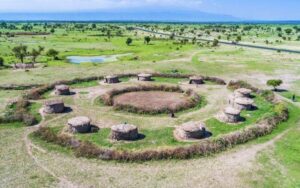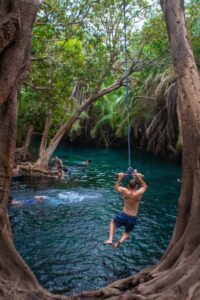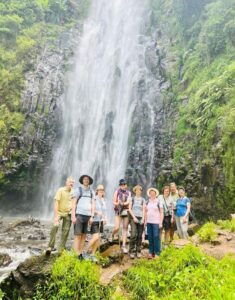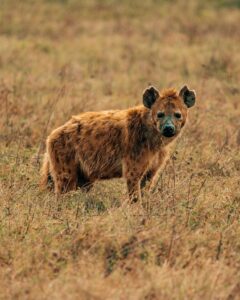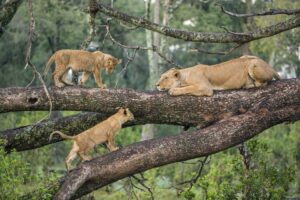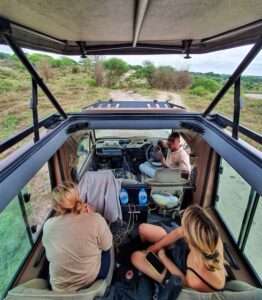7 Days Rongai Route Trek
Price
Min Age
Duration
Max People
Overview
The 7-Day Rongai Route is an excellent option for those seeking a less-trafficked path up Mount Kilimanjaro with a significantly higher summit success rate. This route begins on the northern side of the mountain, near the Kenyan border, and offers a more gradual and consistent ascent compared to the steeper, more direct routes. The longer itinerary provides a crucial extra day for acclimatization, which is the most significant factor in preventing altitude sickness and reaching the summit. The trek showcases the diverse beauty of Kilimanjaro, from the montane forest on the lower slopes to the unique alpine desert of the "Saddle" between the Kibo and Mawenzi peaks. The final ascent and descent follow the well-established Marangu Route.
Highlights
- A more gradual and comfortable ascent profile, increasing the chances of a successful summit.
- A crucial extra day for acclimatization at Mawenzi Tarn.
- Trekking through a less-crowded wilderness, offering a more serene experience.
- The opportunity to spot unique wildlife, including the black-and-white Colobus monkey.
- Witnessing the stunning sunrise from Uhuru Peak, the highest point in Africa.
- The descent via the Marangu Route, providing a different perspective of the mountain.
Other Important Information
- Summit Success Rate: The 7-day itinerary has an estimated summit success rate of 70-90%, which is considerably higher than the 6-day option.
- Acclimatization: The additional day is a significant benefit for acclimatization, allowing your body more time to adapt to the high altitude.
- Weather: The Rongai Route is known for being drier than the southern routes, making it a good choice during the rainy season.
- Accommodation: All nights on the mountain are spent in tents, with the final night on the mountain spent in the huts of the Marangu Route.
- Physical Fitness: While the additional day makes it more accessible, a good level of physical fitness is still required for the long trekking days.
Route Map
Tour Plan
Day 1: Nalemoru Gate (1,990m) to Simba Camp (2,625m)
The trek begins with a drive from Moshi to the Nalemoru Gate, where you will complete registration formalities. The path is a gradual and winding trail that takes you through maize and potato fields before entering a beautiful montane forest. This section of the trek is a gentle introduction, with a consistent but not overly strenuous climb. You will reach Simba Camp on the edge of the moorland zone, offering expansive views of the Kenyan plains.
- Trekking Time: 3–4 hours
- Distance: 7 km (4.3 miles)
Day 2: Simba Camp (2,625m) to Second Cave Camp (3,450m)
Today's trek is a steady ascent through the moorland. You will enjoy superb views of Kibo and the eastern ice fields on the crater rim. The landscape becomes more open as you leave the forest behind. The hike is moderate and allows for good acclimatization. Upon reaching Second Cave Camp, you'll have time to rest and prepare for the next day.
- Trekking Time: 3–4 hours
- Distance: 6 km (3.7 miles)
Day 3: Second Cave Camp (3,450m) to Kikelewa Camp (3,630m)
You will continue your trek across the open moorland on a smaller path that heads toward the jagged peaks of Mawenzi. The campsite is nestled in a sheltered valley with giant Senecio plants. The views of the mountain and surrounding wilderness are increasingly impressive. This is a shorter trekking day, providing ample time to rest and enjoy the scenery.
- Trekking Time: 2–3 hours
- Distance: 9 km (5.6 miles)
Day 4: Kikelewa Camp (3,630m) to Mawenzi Tarn Hut (4,310m)
Today's trek is a short but steep climb up grassy slopes. The reward for your effort is a stunning panoramic view and the unique experience of reaching Mawenzi Tarn Hut, which is spectacularly situated in a cirque directly beneath the towering spires of Mawenzi. The afternoon is dedicated to rest and acclimatization at this beautiful camp. This extra day is the key to the higher success rate of the 7-day itinerary.
- Trekking Time: 3–4 hours
- Distance: 6 km (3.7 miles)
Day 5: Mawenzi Tarn Hut (4,310m) to Kibo Hut (4,700m)
You will trek across the famous "Saddle," a high-altitude alpine desert that stretches between the peaks of Kibo and Mawenzi. This is a desolate and barren landscape that feels like a different planet. The path is a gradual incline, and you will conserve your energy for the final ascent. You'll reach Kibo Hut in the afternoon and spend the rest of the day resting and preparing your gear for the summit push.
- Trekking Time: 4–5 hours
- Distance: 9 km (5.6 miles)
Day 6: Kibo Hut (4,700m) to Uhuru Peak (5,895m) & Horombo Hut (3,720m)
The summit climb begins in the early hours of the morning. You'll hike on steep volcanic scree, with the cold and darkness making the climb particularly challenging. You'll reach the crater rim at Gilman's Point just as the sun rises, providing a magnificent view. From there, you'll continue along the rim to Uhuru Peak, the highest point in Africa. After celebrating your achievement, you'll begin the long descent back to Kibo Hut for a short rest and then continue all the way down to Horombo Hut.
- Trekking Time: 12–14 hours
- Distance: 20 km (12.4 miles)
Day 7: Horombo Hut (3,720m) to Marangu Gate (1,860m)
On the final day of your expedition, you'll have a long, easy descent. The trail winds through the montane forest, which is often lush and verdant. You'll reach Marangu Gate, where you will sign out of the park and receive your well-deserved summit certificate. A vehicle will be waiting to take you back to your hotel in Moshi for a celebratory dinner and a much-needed rest.
- Trekking Time: 5–7 hours
- Distance: 19 km (11.8 miles)
Included/Excluded
- All park fees, including camping and rescue fees.
- Professional, licensed, and experienced mountain guides, a cook, and porters.
- All meals on the mountain (breakfast, lunch, and dinner).
- Drinking water.
- Tents and camping equipment.
- Transfers to and from the gate.
- International flights.
- Tanzania visa fees
- Travel and medical insurance (including high-altitude trekking coverage).
- Personal climbing gear (e.g., sleeping bag, boots, trekking poles).
- Tips for the guides, porters, and cook.
- Alcoholic beverages and soft drinks.
- Personal expenses.
Tour Map
Frequency Asked Questions
How high is Mount Kilimanjaro?
Do I need prior climbing experience to trek Kilimanjaro?
What is the best time to climb Kilimanjaro?
Which route is the best for climbing Kilimanjaro?
How long does it take to climb Kilimanjaro?
Depending on the route, treks range from 5 to 9 days. Longer routes provide better acclimatization and higher summit success rates.
Do I need a guide to climb Kilimanjaro?
What is altitude sickness and how can I avoid it?
Altitude sickness is caused by reduced oxygen at higher elevations. Choosing longer routes, staying hydrated, and ascending gradually help reduce the risk.
What should I pack for a Kilimanjaro climb?
How fit do I need to be to climb Kilimanjaro?
What happens after the climb?
You may like
Book This Tour
Last Minute Deals
Why You Travel with us ?
- Local Expertise
- Tailor-Made Safaris
- Unforgettable Experiences
- Professional Safari Guides
- Comfort & Safety
- Affordable Packages
- Responsible Tourism
- 24/7 Support
- Diverse Destinations
- Trusted Reputation

